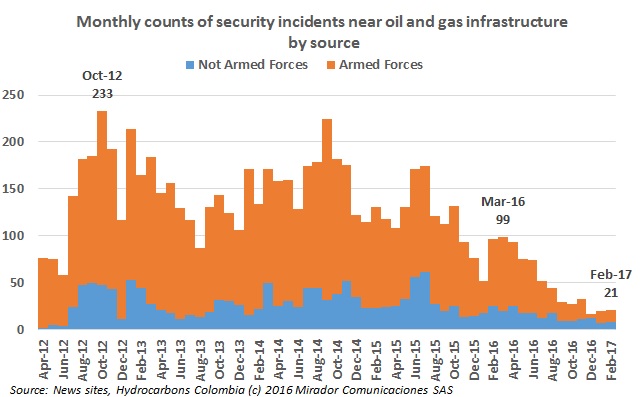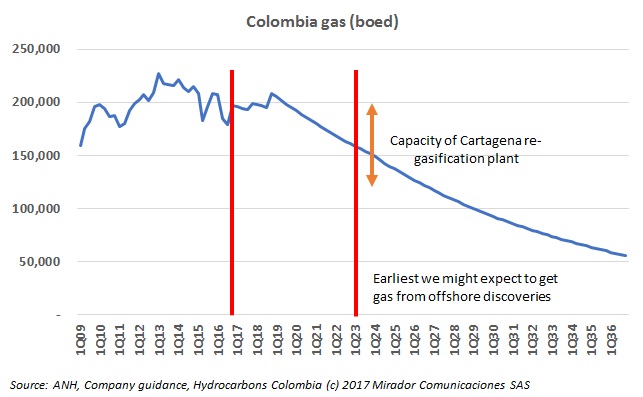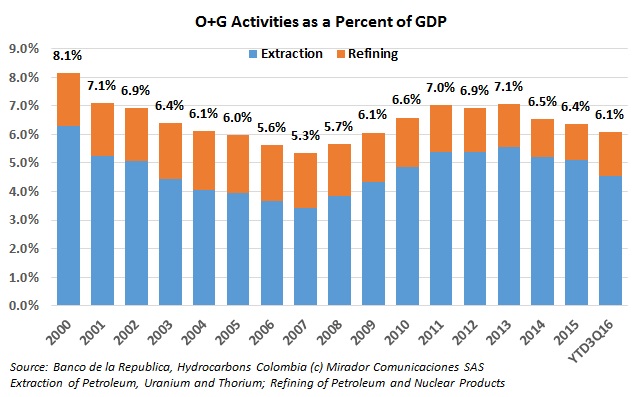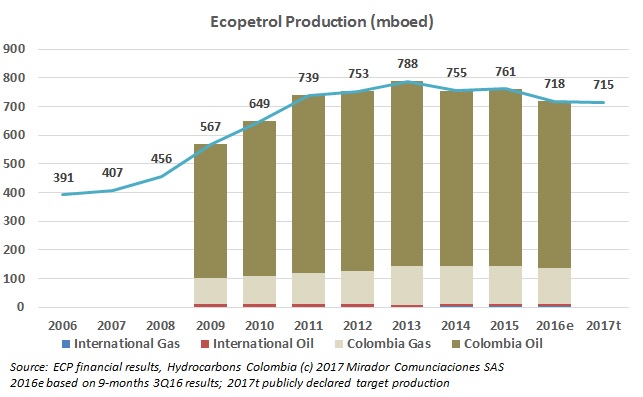
Security incidents near oil and gas infrastructure went up slightly last month (by one) and the ELN remains the protagonist.
Crudo Transparente is a non-governmental organization that “informs, socializes and analyzes the socio-economic impacts of the hydrocarbons sector in the country”.

We needed to build a simple gas forecast for a few fields for a consulting project so we decided to build a model of the Colombian market. The results were interesting even with these simple assumptions.
This week we published a story and two tweets about whether Colombia did or did not use the windfall from high oil prices correctly. The ‘votes’ were 2-to-1 in favor of a wasted or lost opportunity.

A companion article by our Managing Editor deals with the question “Is Colombia too dependent on oil and gas?” It also addresses MinHacienda Mauricio Cárdenas’ contention that the industry is, in his words, ‘irrelevant’.

A few weeks ago, we questioned the feasibility of MinMinas’ 2017 crude production target of 875mbd. No one jumped on us – or, frankly, congratulated us for our insightful analysis.
This past weekend, a friend of mine who is not in the industry asked me what exactly our newsletter talks about. So I gave the elevator pitch and that got me thinking about why we choose these topics.
So January is in the books. The groundhogs have pronounced on winter (split decision) and as an old boss of mine used to say with a slight note of panic in his voice “One twelfth of the year has gone by! One third of the first quarter is over! What have we accomplished!”

Last week we separately published graphs of our monthly counts of security incidents and of blockades in all of 2016.
Rather than scatter my predictions over a number of articles, I decided to consolidate them in one. At the very least, it will be easier to check how I / we did next January.